Artists
Science and the Subconscious Percolate in Maysha Mohamedi’s Abstractions
Pace Gallery is presenting new work by the artist during Berlin Gallery Weekend.
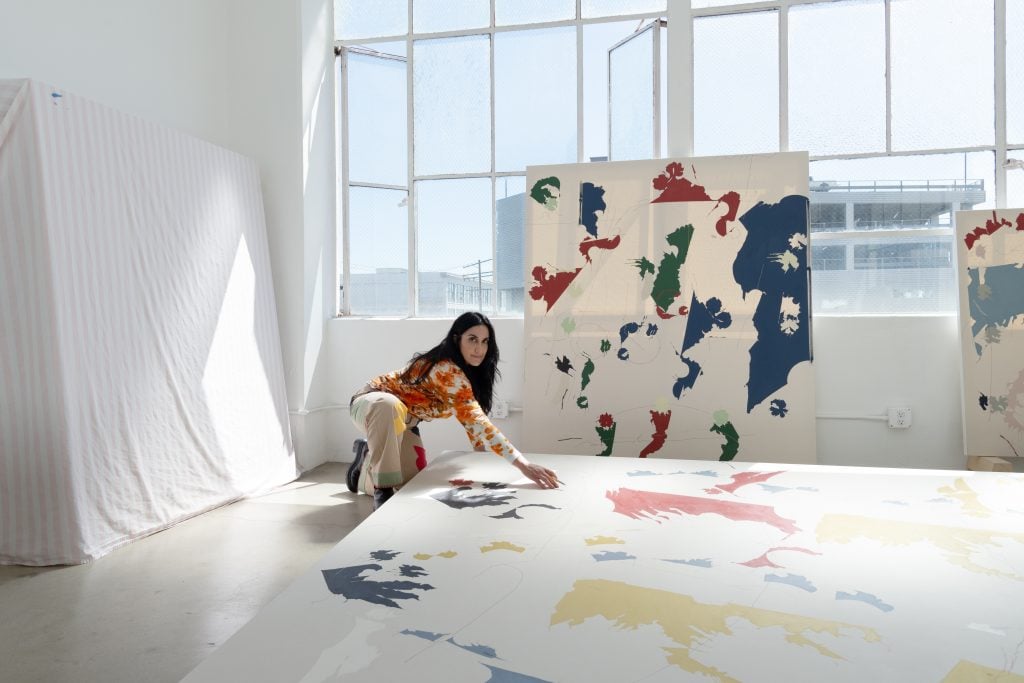
Maysha Mohamedi has been writing in a diary almost every single day since she was 15 years old. When it was time to look back through the old pages for a book of her collected writings, it turned out that her early material didn’t age as well as she’d hoped. “It was really gnarly,” she said with a laugh as we sat in her Los Angeles studio. “It was so gnarly, and I wanted to publish it. I was so lit up and excited.”
Her path to being an artist has involved a lot of technical experimentation, trial and error in front of the canvas, and self-reflection in the diary. After growing up in San Luis Obispo, California, and studying cognitive science at UC San Diego, she decided to start painting while spending time in Japan early in her career, where a National Science Foundation grant funded a year of study in a mathematical neuroscience lab.
Pre-smartphone, living in Japan was lonely and isolating, but she could paint at home. “I knew I would be truly cut off, so it freed me to make whatever I wanted to make in my transition into being an artist,” she added.
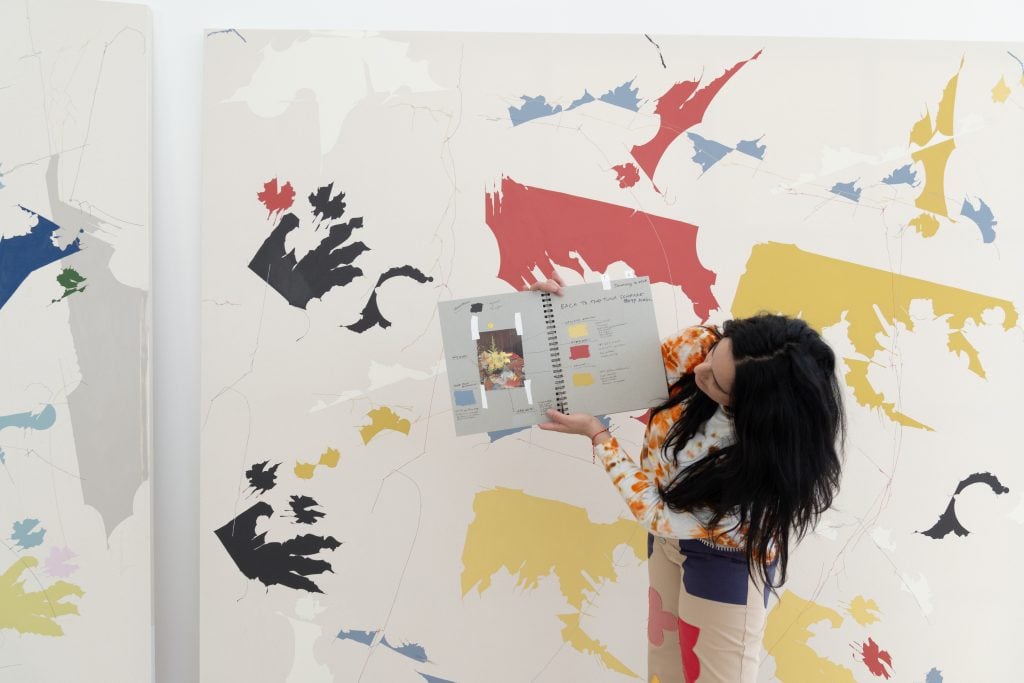
Photography by Megan Cerminaro © Maysha Mohamedi
Mohamedi later received her MFA in painting from the CCA in San Francisco, though her background in neuroscience often reveals itself in the lines of her paintings, where her Color Field-like works mix abstraction with precision: spare, repeating lines and forms recall shapes that could be cross sections of a specimen under a microscope; a combination of crisp edges and craggy, nervous squiggles that resemble California’s unevenly even borders; or an ancient, alien alphabet.
This sensibility will course through a standalone presentation of nine new paintings that Pace Gallery is presenting during Berlin Gallery Weekend, which opens to the public this weekend. The artist will also be the first exhibition at the gallery’s Tokyo outpost this September as well, on the 20th anniversary of her time in Japan, where she first became an artist. Ben Strauss-Malcolm, vice president of Pace, lauded the artist’s “captivating exploration of abstraction, intricately woven with insights drawn from her background,” noting that it is “a testament to the intersection of personal history and universal connectivity, inviting viewers into immersive experiences that resonate on deeply human levels.”
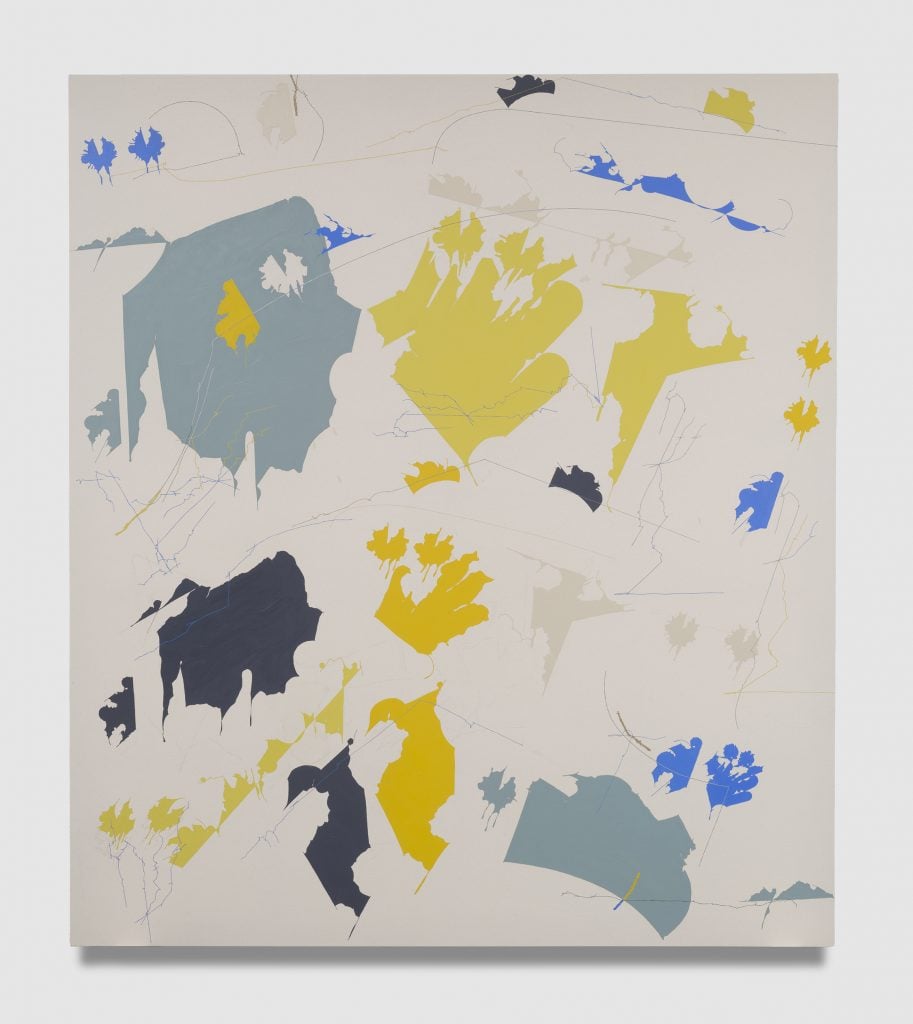
Maysha Mohamedi, My Angels Flew Miles to Reach Me, (2024). © Maysha Mohamedi, courtesy Pace Gallery
Many of the forms on Mohamedi’s canvases are in direct dialogue with each other: repeating visual phrases appear to have a back and forth with each other. They look like moments or feelings that she has at her recall. “There’s something about these shapes that are like letters, but it’s almost like I’m uncovering them rather than inventing them,” she said of these formalities in her work while we stood in front of the canvases in her sunlight-flooded Downtown Los Angeles space in the Bendix Building. The industrial high-rise also houses several other artist studios as well as galleries and nonprofits including Château Shatto, in lieu, and JOAN.
Mohamedi’s daily diary has also come to support her artistic process, where she pastes in collages from pages of old magazines and children’s crafting books to create something like a cookbook for her own color formulas. “I start with two fixed variables—the color and either the title or the sentiment,” she told me while examining a corner detail. What’s the limiting factor for a painting? When is it finished? “I, like all of us, [and] especially women, have an internal temporal sense of how long we’re willing to suffer with a thing,” she noted. Making painting “either keeps me in a level of physical trance that helps me work through whatever subconscious material would let me let go of a problem, or it’s occupying my time so I can’t act out and make it worse,” she laughed.
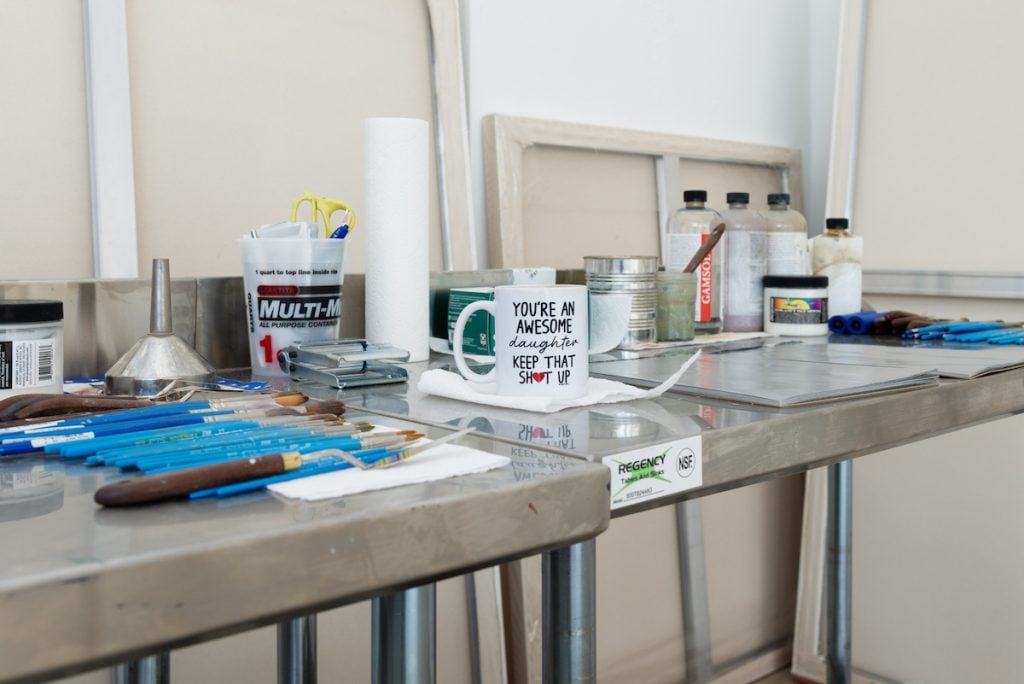
Photography by Megan Cerminaro © Maysha Mohamedi
Many of the works that lined the wall of her studio when we spoke earlier this month are now in Berlin where they are being hung as a part of her exhibition “Mute Counsel.” The show inaugurates Pace’s new popup gallery in Berlin, helmed by senior director Laura Attanasio in a historic building in the gallery-filled courtyard of Mercator Höfe (Max Hetzler, Galerie Judin, and Esther Schipper have spaces there). The launch is the next phase in Pace’s strengthening presence in Berlin after the gallery opened a private office in the German capital in 2023. Mohamedi’s works are priced between $65,000 to $100,000.
The title of the show draws on on the artist’s personal reflections on feeling that a “powerful directionality” that is usually present in her life had “completely fallen away” when she became a mother to her two children. “I was with my babies and so much of my internal resources were given over to another being, and I had no capacity to feel or reflect, and I was having that feeling again of calling out and not having meaning come back to me,” she recalled.
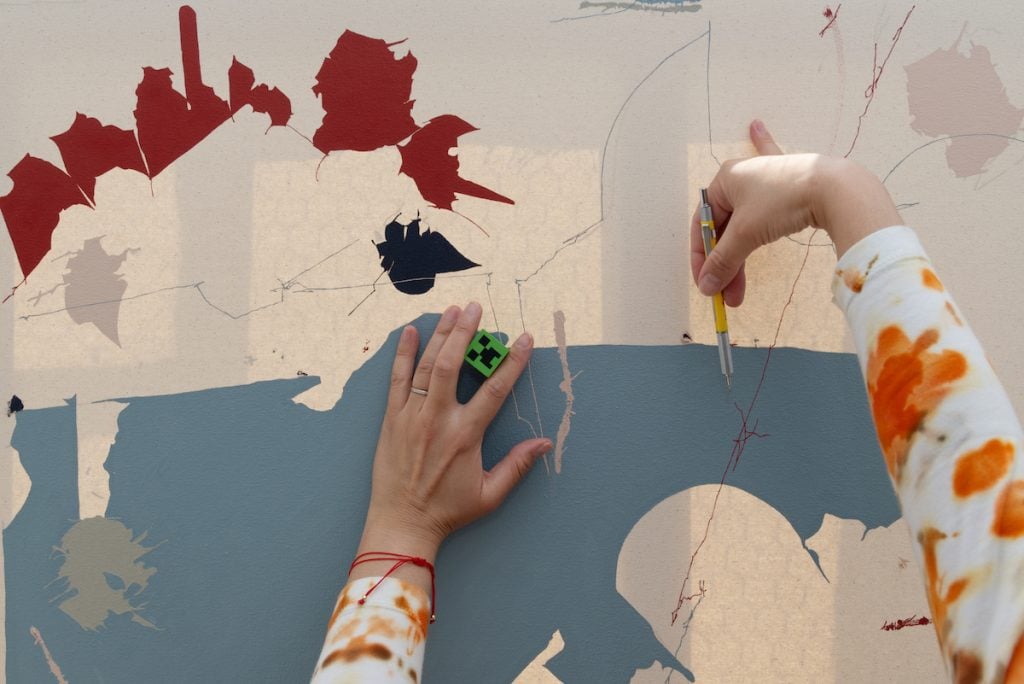
Photography by Megan Cerminaro © Maysha Mohamedi
“It truly felt like mute counsel—I’m looking for counsel and it was mute, and it was troubling. I was asking all these big, embarrassing questions. I didn’t understand how to have faith when I’m not thinking about the future… When I’m doing these paintings, I am entranced, in the moment. And I had to rediscover that warm gushy feeling of meaning without having any concept of the next moment,” she reflects.
Painting has been one way to process motherhood, and all its power and joy, and a work at her show in 2023 at Pace New York called “Gamebreaker” included a large scale work, her largest painting yet, called Cheers to My Children (2022).
Standing in front of her finished works, she mused over their journey from inception, or birth, to being complete. “What is happening between the initial impulse and then this?” she reflected. “In what way can a painting stay alive?”





